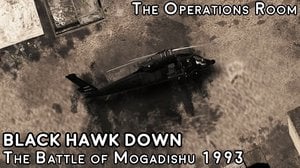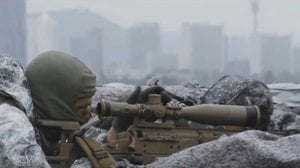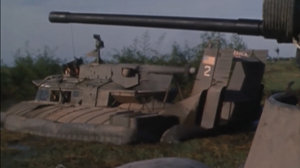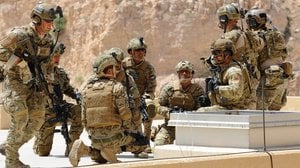
The Battle of Verdun, 1916
Published 1 years ago
Archival newsreel footage of the Battle of Verdun, 1916, courtesy of the YouTube channel British Pathé. One of the bloodiest battles in human history, Verdun was a bid by Imperial German Army to defeat France through attrition, and in eleven months of combat the casualty rate for both sides would reach one million men. Over the past year aspects of Russia’s imperial war against Ukraine have inspired references to the bloody stalemate of the Western Front in the First World War. In the past year the battlespace in Ukraine has settled into a series of opposing fortifications extending through eastern and southern Ukraine, with soldiers of both sides digging into trenches as each army hammers the other with artillery. To many observes the war has devolved into a stalemate which will be broken only through the prolific expenditure of blood, steel, and high explosives. Given these apparent similarities, it only seems fitting to revisit one of the more gruesome additional struggles of the Great War to obtain some historical context.
In 1914, The Imperial German Army entered France intent on achieving a swift victory through rapid, grand maneuver. Once France stopped the German advance at the First Battle of the Marne, the war of movement quickly ended and from Switzerland to the sea two opposing lines of trenches and fortifications were constructed, separated by a shell-ravaged wasteland. Throughout 1915, French attempts to regain lost territory were repulsed by the German Army, but eventually the Chief of the German Imperial General Staff, Erich von Falkenhayn, became convinced that victory could not be achieved through decisive battle. By conducting a limited offensive against the fortress city of Verdun, the Germans could force the French to commit their operational reserves in fruitless counterattacks, which would be repulsed with German machine guns and heavy artillery. The French would then be forced to call on the British to launch an offensive to draw away German reserves from Verdun, and British forces would be subjected to the same treatment. In this manner, von Falkenhayn intended to “bleed the French white” by inflicting murderous casualties, depleting their reserves, and forcing the French Republic to seek an armistice.
The German Army devised a plan intended to minimize German casualties while inflicting a maximum number of casualties on their opponents. German infantry units would be assigned large attacks with limited objectives, launched only after a heavy destructive artillery bombardment, with additional attention paid to the bombardment of supply depots and lines of communication, and counter battery fire against French artillery. Once the battle was joined, German counter-battery fire proved less effective than hoped, and the combined effects of French guns and stubborn French infantrymen resulted delayed the seizure of the first day’s objectives for a week while German assault division suffered numerous casualties. Eventually convinced to change tactics and increase the scale of their attacks, von Falkenhayn continued the offensive, and though German casualties were grievous, those inflicted on the French were murderous, with five French soldiers killed for every two Germans. The battle ground on, with the German army making modest territorial gains and capturing some of the forts near Verdun at a terrible cost. After strident demands from the French, the British Army launched an offensive on the Somme, forcing the German Army to transfer artillery to that sector. The French eventually launched a series of offensives intended to reclaim lost ground, but again, the cost for both sides was great. The battle ground to a halt in December, with the French again in possession of the ground held eleven months earlier.
Estimates of the casualties suffered by both sides varied, with the preponderance of sources placing German losses between 336,000 and 355,000 men, and French losses between 379,000 and 400,000 men. By threatening a sensitive point, the German Army had forced the French to commit their reserves and launch counterattacks, inflicting massive casualties against the French, much as they had against the Russians in 1914 and 1915. The German operation also forced the British to launch a costly offensive on the Somme, and so in this manner von Falkenhayn could claim success, but at best the victory was Pyrrhic. From a strategic perspective, the attrition strategy adopted by the German Imperial general Staff did ultimately achieve tangible gains. For the Russians, battlefield losses, combined with the ineptitude of their own leadership and the decision of the German government to assist Vladimir Lennin’s return to Russia ultimately resulted in the collapse of the Czarist regime and the withdrawal of Russia from the war. On the Western Front, horrific casualties sapped the morale of the French Army, and following a failed effort at the Second Battle of the Aisne, many French units on the Western Front mutinied, with as many as forty-nine divisions affected.
Many of the comparisons between Russia’s war in Ukraine are real, albeit superficial. The war of movement has ceased for the time being, with both sides having constructed elaborate lines of fortifications including trenches, pill boxes, barbed wire, and mines. Artillery dominates the battlefield, and both sides have seemingly adopted an attrition strategy, attempting to batter through the other side’s defensive belt, with operational reserves ready to pour through the hole and into the enemy rear once the line is breached. Neither side seems to have the resources required to maneuver around the other, or they are faced by operational or political constraints that limit maneuver. Europe once again must witness the horrors of a static additional battle. Or so it seems. Western observers, journalists, and pundits have been particularly critical of Ukrainian efforts, lamenting the slow progress of their offensive and labeling their strategy as tantamount to abandoning the western way of war, without taking into consideration the true nature of the tactical problem or Ukraine’s operational limitations. And there is also the possibility that, in this case, attrition might work.
Ukraine’s ongoing counter-offensive hoped to quickly open a gap in Russian defenses, allowing Ukrainian brigades to drive to the Sea of Azov, thus severing the land bridge connecting Russia with Crimea. After several weeks it became clear that Ukraine lacked the firepower or the reserves to achieve a breach in Russian fortifications, and that a continuation of their initial plan would result in losses of manpower and materiel. This inspired a shift to a more deliberate approach, a strategy of relentless, limited objective attacks support by a fires plan that targeted Russian artillery, logistics, and reserves. This approach hopes to achieve an asymmetrical attrition gradient by destroying Russian units and equipment while preserving Ukrainian combat power. In many respects this is similar to Erich von Falkenhayn’s goals for the German offensive at Verdun in 1916 – for Ukraine, the goal is the bleed the Russians white. Western combined-arms purists, who preach the gospel of maneuver warfare, will undoubtedly see this line of thought as blasphemous, but, in this case, not only is the Ukrainian limited in its options, but Russia is uniquely susceptible to an attrition strategy.
An attrition strategy threatens to aggravate political, social, and economic tensions in Russia in a manner that is potentially destabilizing to the regime. Russia’s opening gambit in February of last year hoped a for a quick and easy victory, and a protracted conflict was beyond the capabilities of the forces originally committed to the invasion of Ukraine. When existing formations grew depleted, Russia pulled units from other regions, resorted to various recruiting schemes, relied on private military companies (PMCs), and attempted a partial mobilization. The results of those efforts were mixed, and while they injected fresh bodies into the fight, mobilized troops and convicts lacked the proficiency of the soldiers that they replaced. Those replacements have now been consumed by the meatgrinder, and the Russian Army finds itself running low on manpower and without operational reserves to plug any holes in the line or to launch offensive operations. There are rumbles throughout the Russian security services and milblogger community that the time has come for a general mobilization, but the Kremlin has resisted such measures to this point.
Mass mobilization and martial law would bring the reality of war home to the Russian public, and with increasing drone attacks on targets in Russia, incursions onto Russian soil by anti-Putin groups, and the unavoidable economic effects of western sanctions, as evidenced by a tumbling ruble, the Russian public may be disinclined to participate. Mass mobilization runs the risk of destabilizing Russian society, and the net gain will be poorly trained troops who will require months to train, and while will be expected to die in a losing war. Can the current Russian regime take such an action without some form of backlash? Can the Russian Army continue to function under the current circumstances without mutiny or collapse? Will Russian society continue to support the war if subjected to mass mobilization and marital law? For Ukraine, attrition has proved the only solution, given their capabilities, but perhaps it will turn out to be the correct solution.
About the Author

Cam
Cam served as an infantry officer in the Marine Corps, deploying to the Horn of Africa and participating in combat operations in Iraq. He currently works in the maritime industry and in the defense sector as an instructor of combined arms planning and operations. An avid sailor, Cam founded and directs a nonprofit that supports veterans and first responders through sailing.













